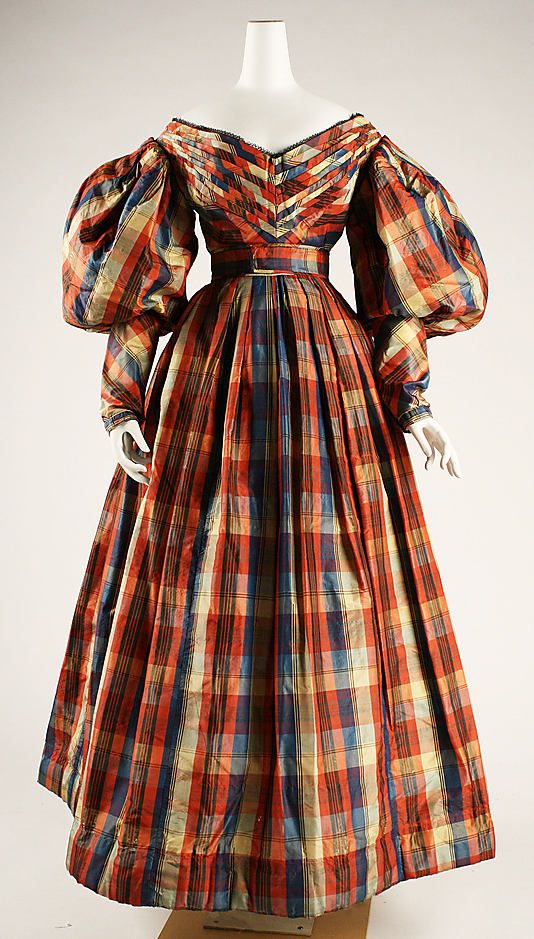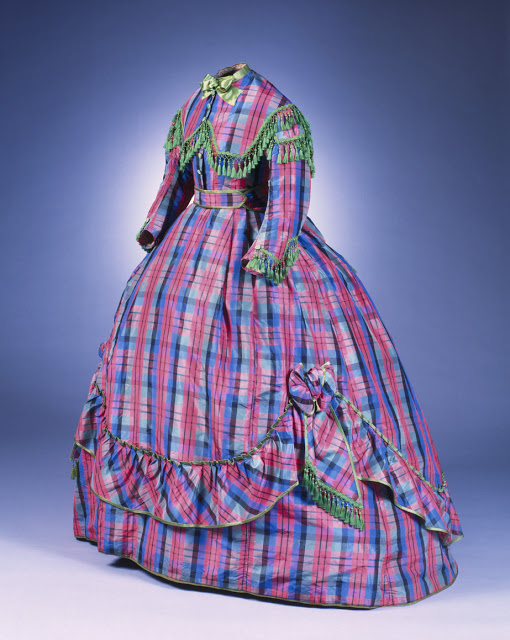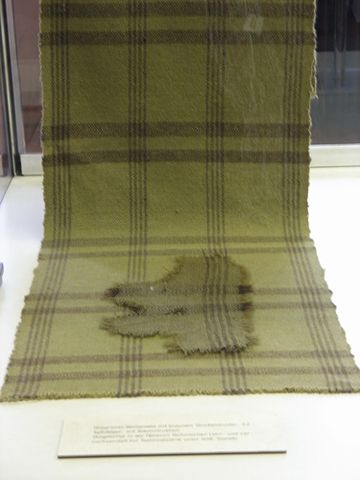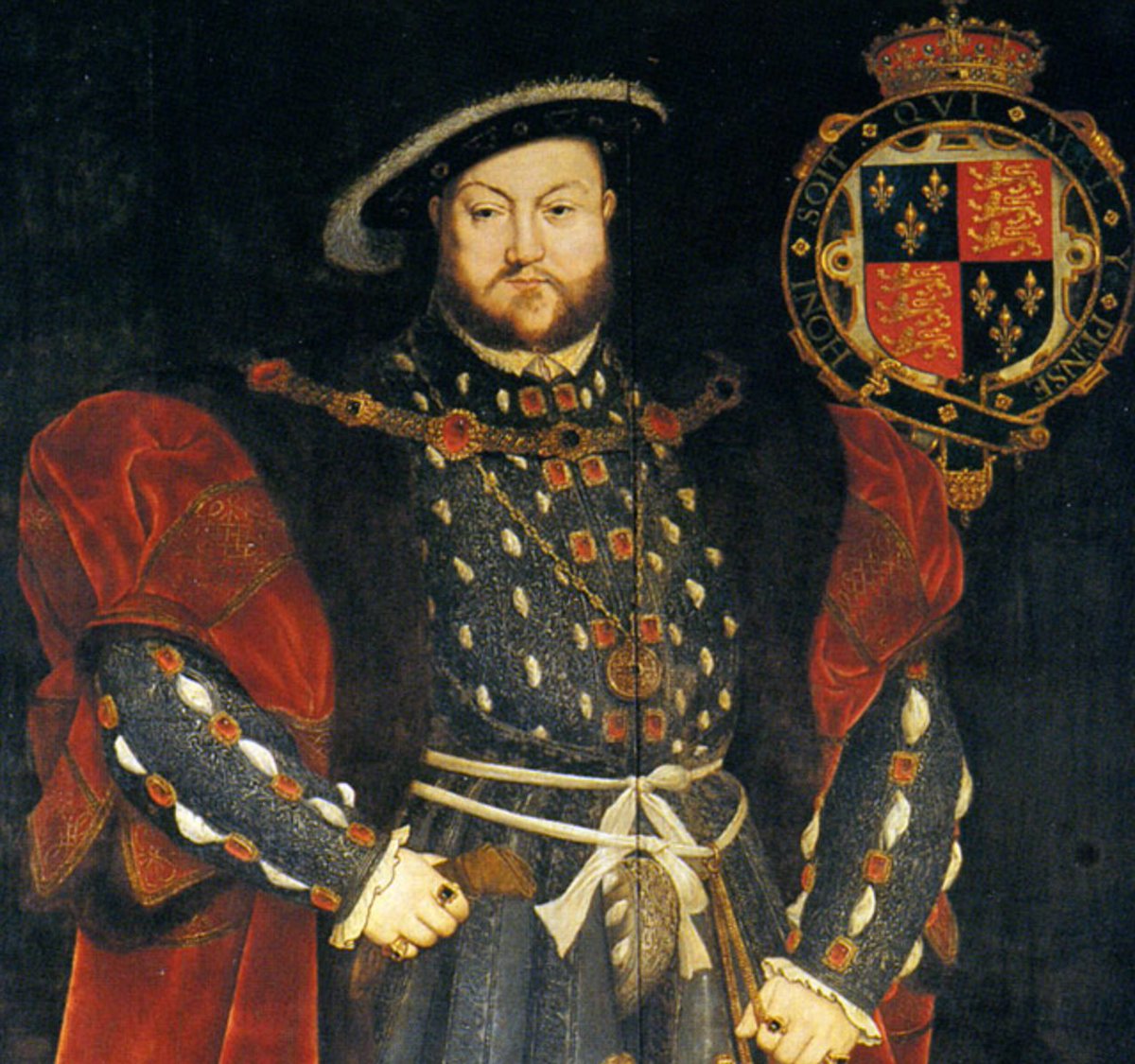
1 - Damask-erade, grinning yellows spinning reds,
Damask-erade! take your fill, let the spectacle astound you
Welcome to tonight's #ThreadTalk: Damask.
This fabric goes beyond musicals, creepy Victorian wallpaper & antique furniture. Let's follow the thread across the globe.
Damask-erade! take your fill, let the spectacle astound you
Welcome to tonight's #ThreadTalk: Damask.
This fabric goes beyond musicals, creepy Victorian wallpaper & antique furniture. Let's follow the thread across the globe.

2 - Damask is a reversible figured fabric. It's also flat, yet has complex designs: this makes it versatile & ideal for catching light.
It isn't, as the name suggests (via the French), from Damascus at all: it's from China and was originally made solely of silk.
It isn't, as the name suggests (via the French), from Damascus at all: it's from China and was originally made solely of silk.

3 - Damask rose to popularity during the Sui and Tang dynasties alongside the major explosion in silk fabric making (particularly for the ruling and aristocratic classes).
Advances in loom technology are to account the appearance of damask in the first place.

Advances in loom technology are to account the appearance of damask in the first place.


4 - According to Dr. BuYun Chen of Swarthmore (whose work in Tang Dynasty fashion is amazing, twill damask arose in the 6th century due to with additions to the two-treadle loom.
Damask silk was part of imperial court dress. Art, centuries after, still shows similar designs.
Damask silk was part of imperial court dress. Art, centuries after, still shows similar designs.

5 - Damask was so valuable during this period it was used in tributes. You also frequently see the fabric as linings in robes, as well. Because nothing says "filthy rich" like damask lining that no one can see. 

6 - The most prized was Liao ling damask, made in Yue. Liao ling damask may have been lost to time, but inspired one of the greatest poets of the age, Bai Juyi (772-846ACE), to write about its qualities. 

7 - (Trans. h/t Dr. Chen)
"Liao twill, liao twill, what are you like?
...
The patterns formed are marvelous,
On a ground of white haze, flowers like clusters of snow.
Who is the weaver? Who wears the robe?
A poor woman from the valley of Yue, & a lady in the palace in Chang'an"
"Liao twill, liao twill, what are you like?
...
The patterns formed are marvelous,
On a ground of white haze, flowers like clusters of snow.
Who is the weaver? Who wears the robe?
A poor woman from the valley of Yue, & a lady in the palace in Chang'an"

8 - Xue Jianxun is credited for the growth of the silk in Yue. He encouraged his soldiers to marry weaving women & gave $$$ for them to settle. It worked.
However, it was super labor intensive.
The silk industry was built on skilled women working a fever pace to meet demand.
However, it was super labor intensive.
The silk industry was built on skilled women working a fever pace to meet demand.

9 - The state became involved during the Tang Dynasty by creating official workshops, limiting who could wear colors & designs, enacting sumptuary laws & even destroying looms in some instances.
Yeah, that didn't work. Silk fashion still went wild.
Yeah, that didn't work. Silk fashion still went wild.

10 - Every fabric I've shared at SOME POINT has been banned. TL;DR, it never works!
So the silk & damask craze went international. It was Damascus the city that was the center of fabric trade on the Silk Road for this weave--so the French called it damask & we just went with it.
So the silk & damask craze went international. It was Damascus the city that was the center of fabric trade on the Silk Road for this weave--so the French called it damask & we just went with it.

11 - After the fall of the Byzantine Empire, it primarily lingers only in Islamic Spain until the 13th century Italy comes in to play re: making those silkworm cocoons!
Yay, worm butts! Who knew. But you need mulberry trees to get silkworms. It's a whole thing.

Yay, worm butts! Who knew. But you need mulberry trees to get silkworms. It's a whole thing.
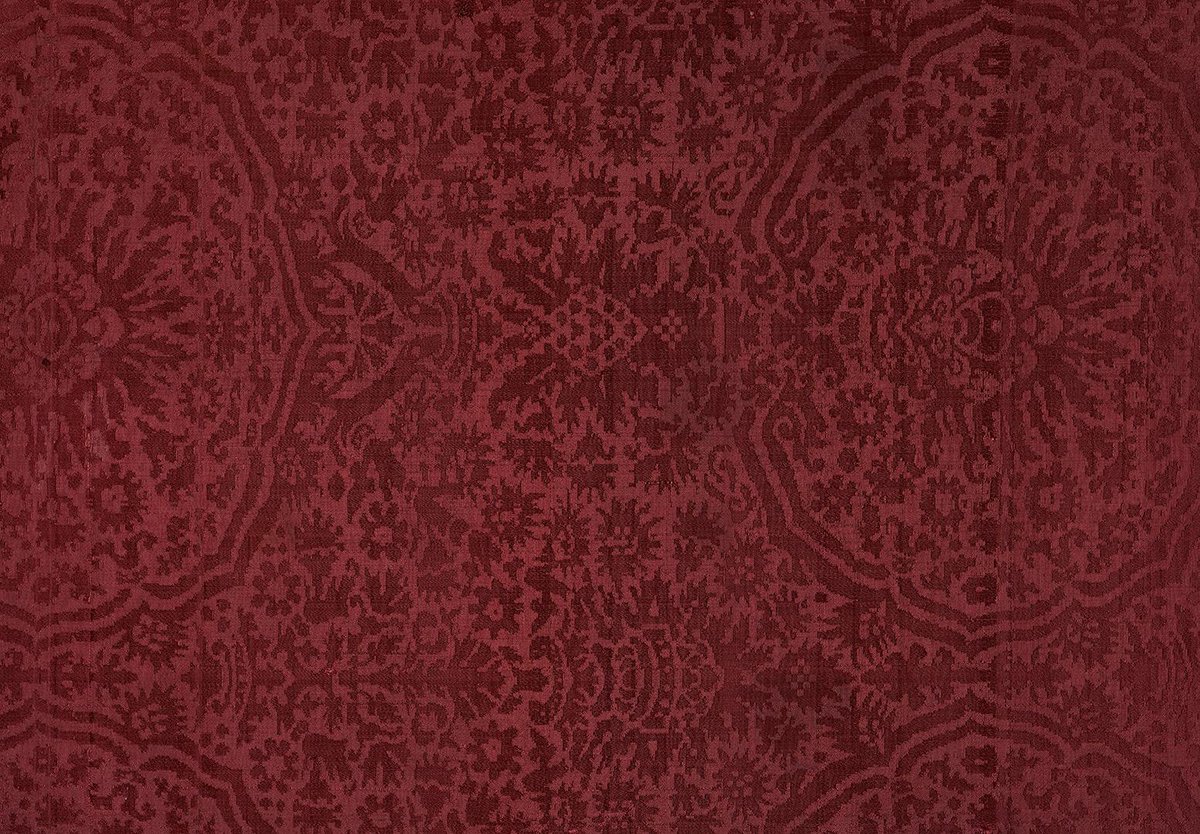

12 - Italy wasn't alone. King James I of England tried to make English silk (thanks to Henry 8 for razing mulberries in monasteries) by getting nobles to plant them.
Which worked about as well as Tudor deodorant. He even tried to grow the trees in the colonies, but no luck.
Which worked about as well as Tudor deodorant. He even tried to grow the trees in the colonies, but no luck.

13 - Damask was everywhere. You can see in Isabel's skirt how, in Titian's rendering, the pattern picks up the light. In Maria Christinas' painting, you can even see the reverse side inside her sleeve of the damask--in this case, it's a possibly a damask brocade. 

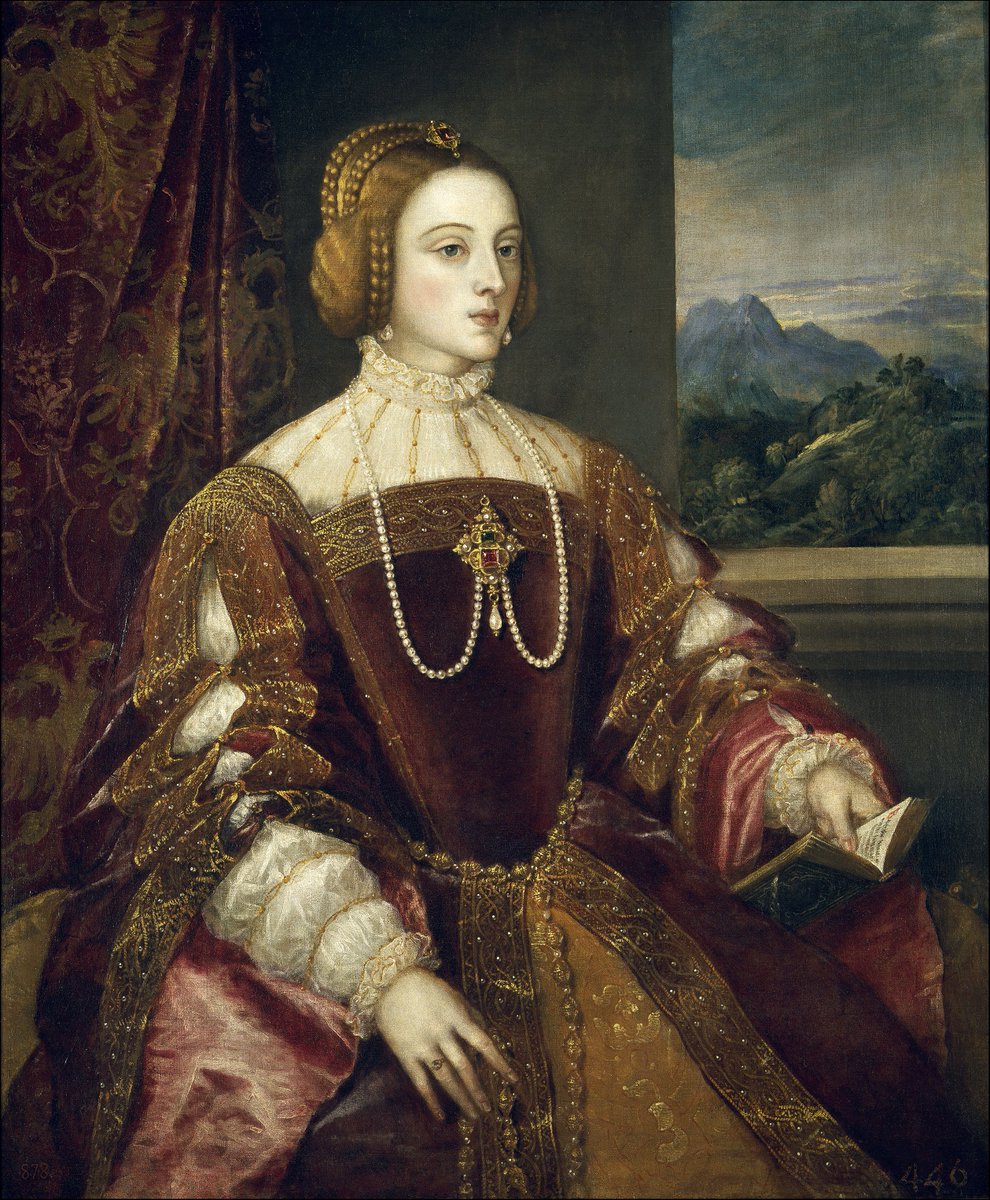

14 - But damask was still produced globally, and in India we also have some beautiful examples.
This 18th century patka, or court sash, uses cotton and silk together, and uses metallic threads for contrast.
This 18th century patka, or court sash, uses cotton and silk together, and uses metallic threads for contrast.

15 - Technology propelled damasks into new heights: more colors, metallic threads, & new patterns arrived through the 16th and 17th centuries. You could patch it together with brocades, taffetas, and whatnot.
Black on black meant even mourning was fancy.

Black on black meant even mourning was fancy.


16 - If you've been following along on my #ThreadTalks you'll probably know what comes next.
Yup, the Jacquard loom. Jacquard looms could make damask, and this added to the general complexity and speed. This explains why we see another big boom coming along in the Victorian era
Yup, the Jacquard loom. Jacquard looms could make damask, and this added to the general complexity and speed. This explains why we see another big boom coming along in the Victorian era

17 - The first dress here is about as perfectly late 19th as I can think, and that damask is precisely what you would expect. I am a sucker for the black on black damask, myself, and the polka dots in the second dress just make me giddy. 



18 - Of course, damask wasn't just reserved for clothing, though that's where I primarily find it most enjoyable.
You can find in tapestries, wallpaper, curtains, and in many furniture pieces. Also in stays and undergarments, as pictured here.

You can find in tapestries, wallpaper, curtains, and in many furniture pieces. Also in stays and undergarments, as pictured here.


19 - What amazes me is how little the patterns really changed over time. Centuries apart, and the motifs and production are still the same, albeit now computerized.
Bai Juyi was right to be amazed. He was witnessing something absolutely timeless.

Bai Juyi was right to be amazed. He was witnessing something absolutely timeless.
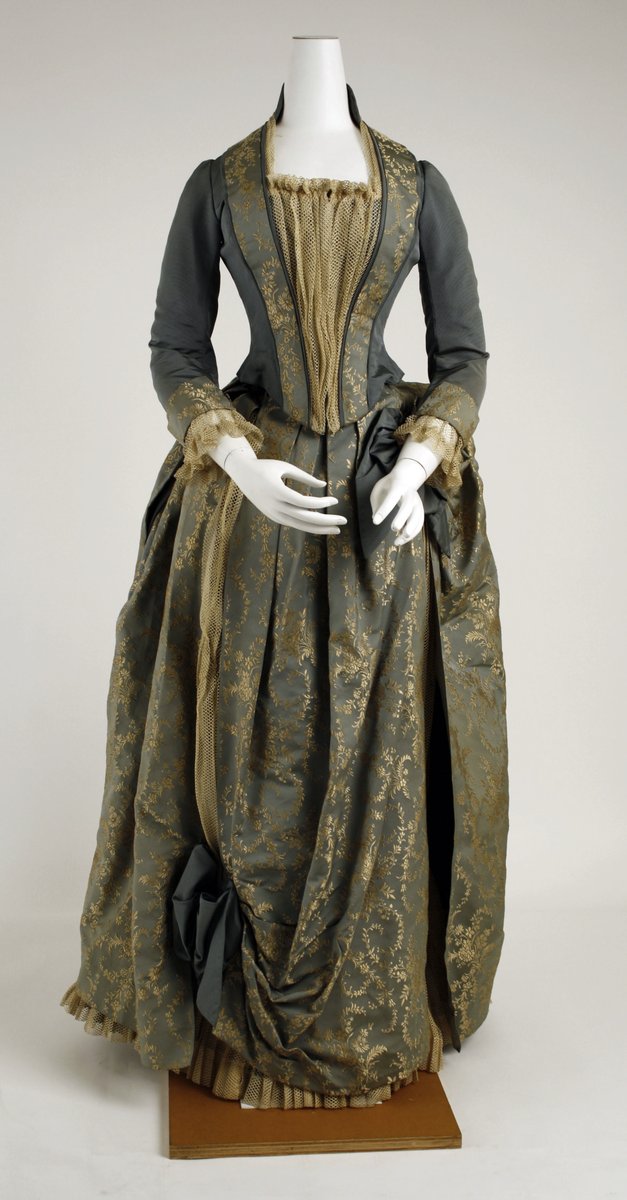

20 - This evening ensemble from the House of Worth combines velvet and metallic embellishments with some... interesting? damask designs.
The result is both timely and almost otherworldly--it looks more like a film costume than a dress. House of Worth, you do you.
The result is both timely and almost otherworldly--it looks more like a film costume than a dress. House of Worth, you do you.

21 - Another example of late 19th century work is here -- and it's quite a comment on culture, integrating Indian patterns, like paisley, and an almost sari-like appearance along with the damask deep blues and pleats. 

22 - One last dress to share before I leave you tonight, in which the damask pattern looks like mermaid scales and is so beautiful I might need my smelling salts if I keep looking at it.
Remember: fabric is politics, fabric is power, fabric is history, and fabric is culture.

Remember: fabric is politics, fabric is power, fabric is history, and fabric is culture.


23 - And this is the front of the gown from the first image, as well. Just to give you the full razzle dazzle. I'm not screaming you're screaming... and that's not even my usual color. 

24 - Because I have all the sources, here we go... major props to Dr. Chen's work.
fashion-history.lovetoknow.com/fabrics-fibers…
uwapress.uw.edu/book/978029574…
books.google.com/books?id=VweLD…
en.wikipedia.org/wiki/Damasceni…
chinasilkmuseum.com/gwgk/info_4.as…
newhanfu.com/7848.html
wedriveeast.wordpress.com/2011/06/04/chi…
uwapress.uw.edu/book/978029574…
fashion-history.lovetoknow.com/fabrics-fibers…
uwapress.uw.edu/book/978029574…
books.google.com/books?id=VweLD…
en.wikipedia.org/wiki/Damasceni…
chinasilkmuseum.com/gwgk/info_4.as…
newhanfu.com/7848.html
wedriveeast.wordpress.com/2011/06/04/chi…
uwapress.uw.edu/book/978029574…
25 - and more
artsandculture.google.com/culturalinstit…
moruslondinium.org/research/timel…
metmuseum.org/art/collection…
patternobserver.com/2015/03/31/his…
en.wikipedia.org/wiki/Damask
startupfashion.com/fashion-archiv…
lostinfabrics.com/damask/
tissura.com/articles/jacqu…
sewport.com/fabrics-direct…
en.chiculture.net/index.php?file…
artsandculture.google.com/culturalinstit…
moruslondinium.org/research/timel…
metmuseum.org/art/collection…
patternobserver.com/2015/03/31/his…
en.wikipedia.org/wiki/Damask
startupfashion.com/fashion-archiv…
lostinfabrics.com/damask/
tissura.com/articles/jacqu…
sewport.com/fabrics-direct…
en.chiculture.net/index.php?file…
• • •
Missing some Tweet in this thread? You can try to
force a refresh

